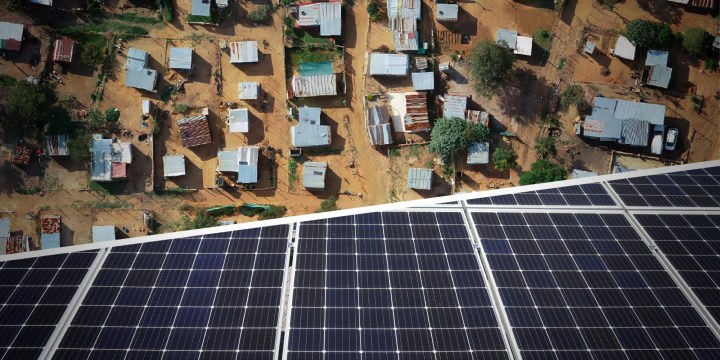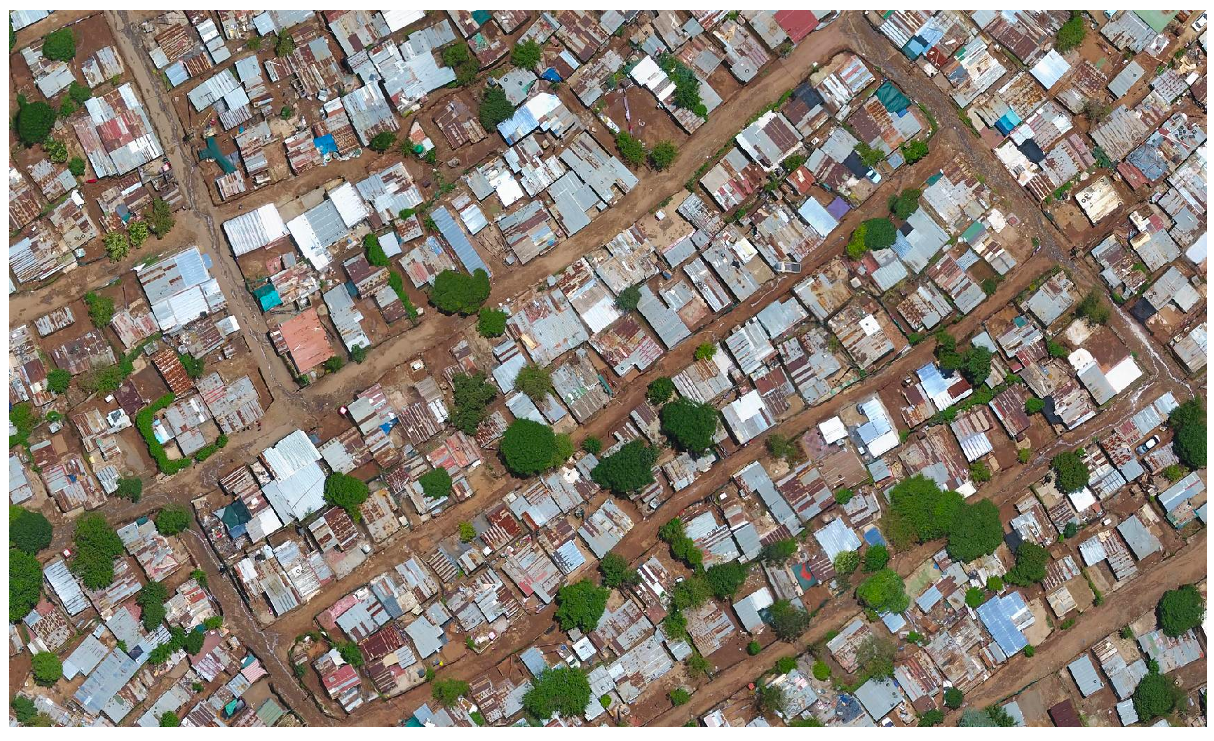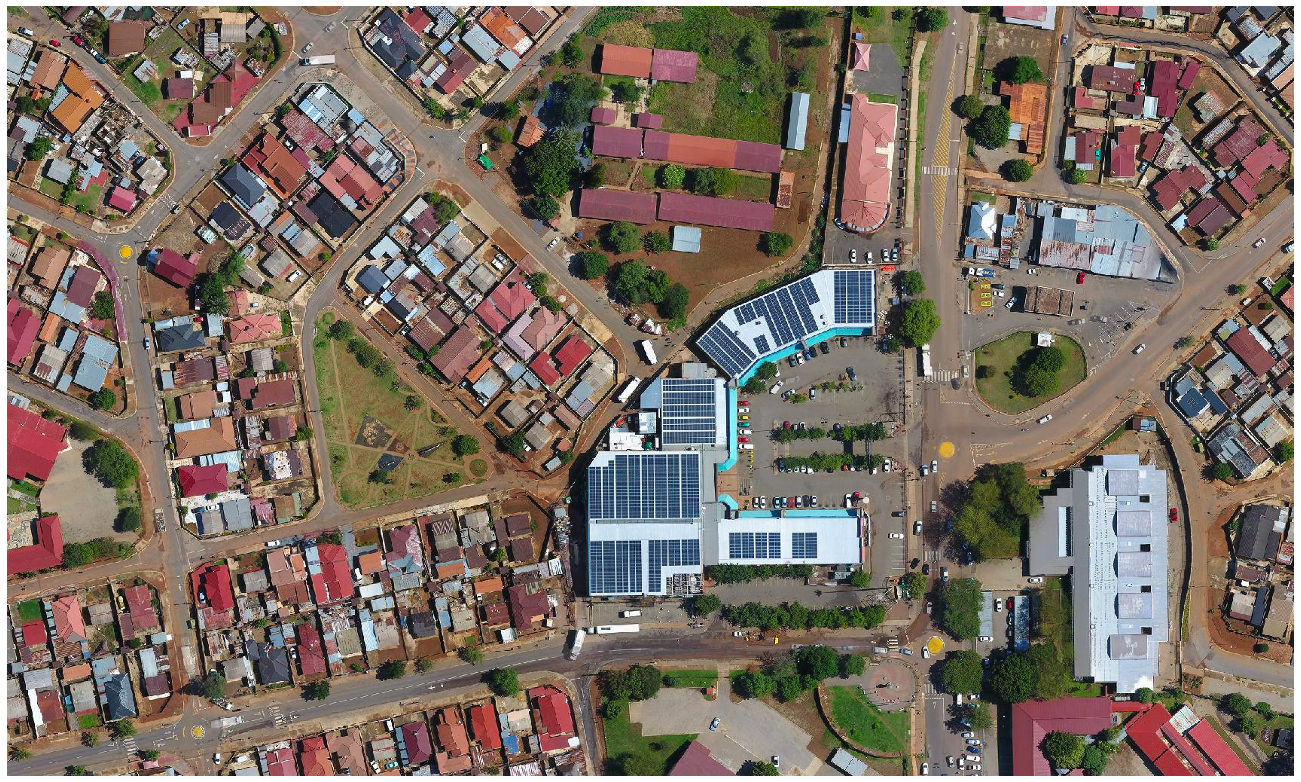RAY OF LIGHT OP-ED
Informal settlements could drive South Africa’s rooftop solar revolution

Informal settlements could drive South Africa’s solar revolution because of enlightened self-interest. Solar would provide their dwellings with power, but also a source of revenue if power is sold back to the grid.
Much debate has been sparked by the announcement that in Cape Town at least, people and companies generating excess power will soon be able to sell it back to the grid, at an approved feed-in tariff.
That will immediately benefit some people in Cape Town — if there is sufficient additional power to sell to the grid – but also those already resourced — industrial plants, factories, wealthier individuals and households who can afford large solar installations (and the connection fees back to the grid).
Of course, everyone will benefit if this additional power impacts on rolling blackouts, but only those high-income households that can afford to install solar systems will get the financial benefit of the feed-in tariff.
Why not simultaneously trigger a “solar revolution” by targeting informal settlements? They are without doubt among some of the poorest spaces in the country. They have not been provided with electricity, and no disputes over illegal connections should occur.
The morphology of informal settlements, as we note below, is to move from free-standing structures to compounds, which can include multiple households in one larger group of structures — which share one very large roof, ideal for solar.
If informal settlement residents are helped upfront — say, through a lease-and-own agreement for the installation and infrastructure — simple self-interest would see households in informal settlements lead the way in harvesting sunshine and selling to the grid. As their solar farms grow, and income increases, they may also be able to move up the socioeconomic ladder, and off social grants. It seems such a clearly virtuous cycle that it must form a core part of the conversation.
The Gauteng Research Triangle (GRT) is a partnership between the Universities of Johannesburg, Pretoria, and the Witwatersrand (Wits). The GRT oversees a range of areas, but one of its main projects is a new health and demographic surveillance site (HDSS) with a split node located in Hillbrow, Atteridgeville West, and Melusi, an informal settlement in Pretoria.
The node is part of the South African Population Research Infrastructure Network (Saprin) hosted by the SA Medical Research Council and funded by the Department of Science and Innovation.
It joins other well-known nodes including Agincourt, Dimamo and Ahri, with further nodes in the early stages in Cape Town, eThekwini and the Eastern Cape.
The Gauteng node is called “GRT-Inspired” (the Gauteng Research Triangle Initiative for the Study of Population, Infrastructure and Regional Economic Development).
The core functions of an HDSS are measuring the population (which should be ~100,000 people) that inhabit dwelling units within the boundaries of the node, which align with Stats SA boundaries.
Through one face-to-face interview per annum, and two shorter telephonic follow-ups per annum, all respondents are contacted three times a year.
We will be developing an intimate knowledge of the spaces that make up the node, and the people living and moving in and out of them, capturing vital statistics as well as covering a range of issues such as migration, health status, socioeconomic status, and so on.
GRT-Inspired was designed as a multidisciplinary initiative and has a group of associated academics across the three partner universities who will analyse the data from multiple perspectives, adding to the value of the core sets of questions asked in all Saprin nodes.
Once the platform for the HDSS is fully developed, it is very easy to nest other related studies onto the platform. For example, it would be very possible to look deeper into household income and expenditure trends by adding a special survey to the existing platform.
Research platforms such as GRT-Inspired have a number of advantages over traditional (cross-sectional) surveys. Because households are surveyed on a longitudinal and panel basis, it allows us better to understand change, and to be able to attribute change to a particular variable.
An HDSS platform also allows us to innovate with policies by piloting interventions and observing how effective the interventions are, over time, and how households and individuals are responding to a particular intervention. A lot of the testing and proof of the efficacy of antiretrovirals was done in such HDSSs.
Visit Daily Maverick’s home page for more news, analysis and investigations
A large part of GRT-Inspired comprises informal settlements. Melusi, one of our sites, is a relatively new settlement in Tshwane — it did not exist in Census 2011, but now houses some 40,000 people. Atteridgeville, while a formal township, also includes a very large (and older) informal area, Jeffsville — colloquially known as Gomorrah. Understanding informality is thus core to the work done in the node.
The first stage of work is complete — a baseline that includes household registration and mapping the entire node, complemented by the use of drones to better understand the morphology of the informal areas in particular. For field workers in informal settlements, far more complex directions are needed than “turn right”!
In the two drone images below, two things are immediately clear. Firstly, informal areas clearly go through a consolidation phase — the dwellings in Melusi are more widely distributed, and still in the process of forming bigger compounds. In “Gomorrah”, which is considerably older, this process has reached near-saturation, and multiple households are clustered in large compounds, with fewer central courtyards open to the sky.

A drone image of Gomorrah. (Photo: Supplied)
The second glaring issue — to us, anyway — is the smattering of single solar panels in Melusi, and their almost complete absence from “Gomorrah”. The point at issue is twofold: solar panels could easily enhance the quality of life of all informal dwellers, and the more efficient they are, the more power they can supply. This is well-known (if not implemented in practice — RDP houses are often accompanied by solar power for geysers but not informal dwellings, where they are at the owner’s cost). Newer settlements show an awareness of solar, but only small units are in place.
Solar clearly works — just see below, for Atteridgeville’s formal areas and non-residential structures, with roofs covered in solar panels.

A satellite image of Atteridgeville. (Photo: Supplied)
The second issue is far more important: if household-produced solar power could be sold back to Eskom, informal settlements could drive the solar revolution because of enlightened self-interest. Solar would provide their dwellings with power, but also a source of revenue if power is sold back to the grid.
Look at the size of the compound rooftops in Atteridgeville, and one gets a sense of how much solar they could generate. But notice too the absence of any solar panels.
Going back to the possibilities for HDSSs to make it possible for innovation in policy, one issue that we’re considering is whether it might be possible to consider some innovation that solves a crisis in South Africa, and also contributes to innovation in social and economic policies.
The decarbonisation transition that South Africa has committed to to address climate change, gives us the opportunity to rethink how all aspects of our economy, including social policy, might be more effective.
This raises an interesting question: might it be possible for South Africa’s decarbonisation transition to include public provision of solar panels to all households, including informal households; and might reform of the grid make it possible for low-income households to earn an income by simply selling electricity back to the grid?
Of course, there are a lot of complications that we would have to consider before developing a concrete policy proposal in this regard. One of the complications that immediately strikes us is to which member of the household would the electricity tariff be paid?
Another is how should the payment be made — in cash or a voucher? Should a means test be used to pay cash to low-income and informal residents, and credits to those in dwellings that already enjoy electricity? Should this be means-tested or not?
These are all important questions that we explore and test at GRT-Inspired an extremely important investment in South Africa’s research infrastructure.
There are aspects of such a proposal that appear very appealing. A large number of high-income households are investing in solar systems, both to overcome rolling blackouts, but also to reduce their dependence on Eskom, which is increasing the price of electricity. Low-income households are unable to afford this investment, and this has the effect of increasing levels of inequality.
Moreover, in line with many other countries, social protection in South Africa is based on the state providing cash grants. These have been very effective at protecting the poor, but the cash amounts are small and do very little to allow low-income households to generate income.
Provision of solar panels — on a lease-and-own basis for the poor — and revising policy to allow households to sell electricity into the grid, gives people an asset that can generate a stream of income.
Such an intervention would also move many households’ and individuals’ incomes above the threshold for other social protection support. Combining such an intervention with domestic production of solar panels will also generate new economic activity and increase employment.
And, it would begin to solve the rolling blackouts problem.
It would probably be fair to say that our economy is in a mess, and our economic policy debate is stuck. It’s time for a bit of innovation. OBP/MC/DM
David Everatt is a Professor at the Wits School of Governance. Professor Imraan Valodia is Pro Vice-Chancellor: Climate, Sustainability and Inequality at the University of the Witwatersrand.




















 Become an Insider
Become an Insider
Inspiring article. Wishing you much success for your work. South Africa, a country with endless possibilities.
A very interesting idea. How would you prevent theft of expensive panels in the informal settlements? Also greater fire risk in these areas would put the capital investment at risk over time?
Now this is more of what we need. More ideas and planning and actual evidentiary based WORK in this than the entire cANCer led government has been able to come up with in 15 YEARS.
sadly this will never work. Some of the warehouses near me have had their solar panels stolen at night if a wall borders a road. At a family member’s farm thieves stole panels twice from a large field array. Any enterprising informal housing solar entrepreneur will lose his shirt and with it all hope. There are also some technical issues to overcome related to how much solar one can put down on a shared low voltage feeder. Rather put solar over a community asset like a school or clinic or market and hope the community does justice to the thieves, termites, rats and hyenas that steal our hope.
I completely accept that there are many potential problems – both predictable and not – but what we’re trying to argue is that it is time to at least try something new, and learn by doing. Will there be stuff-ups? – absolutely. But it may also work…
David, this is pie in the sky.
Most all informal settlement roofs are way too small to support enough panels to feed power into the grid; plus there usually is no grid there.
To be viable. to generate income, after home use, will cost at least R110K per home.
Cape Town has mentioned a R11K grid hook-up fee.
I have used solar power since 1978. Our current system cost R160K
Please involve some solar experts before raising hopes with kind of ill-informed “research” .
Articles like this raise false hopes and mislead.
I’d throw that straight back at you and your “solar experts” – why not take the challenge Imraan and I raise and innovate solar for informal settlements? See what’s possible and what not? Rather than pooh-pooh an idea, try engaging it.
First make sure that feeding into the grid from private roofs is actually possible and works without any problems. Then make homeowners an attractive offer. Also, create affordable housing for those who now
live ‘informally’ and introduce a solar requirement for new developments. I think that would be a more realistic way.
“If you don’t do the arithmetic, then you are destined to talk nonsense.”
That saying applies here. Just a basic calculation would show that a feed-in tariff of R1 per kWh as proposed by Cape Town would not even cover the lease fees for the solar equipment. So these informal settlement communities would be losing money.
The only reason why this feedin tariff will work at all is because wealthier people have bought their solar systems already to be loadshedding proof and they will now be able to sell their excess into the grid. That tariff would never be enough to justify someone buying solar equipment just to supply the grid.
This idea doesn’t make sense.
David, my point is, like others here, that it is irresponsible to throw out challenges (especially if you are a prof.) that are totally unrealistic.
– your arithmetic is lacking
– fancy drone pictures show the tiny structures are not scaled to arrays
– theft will be a problem
– informal roofs are not strong enough to support PV’s
– if there is any grid, it is likely bidirectional so you cannot pump unidirectional power in
– where is there space for the backup inverters and heavy batteries in small, weakly built structures
– do the arithmetic as Dave suggests
– and do talk to folks who actually are solar PV experts (I ran the Maine State solar program years
ago)
Unrealistic challenges need to be pooh-poohed before too many dreamers buy into them. Don’t
dress them up by citing unrelated HDSS research and showing drone aerials to catch the eye.
I shan’t continue this, as you continue to throw stereotypical negatives without – it seems – knowing anything about informal settlements, and especially those embedded in the HDSS which I manage and from which this research comes. The day you find you’re shutting down ideas without even contemplating them, seeing how you can innovate product lines, trying them out, not even accepting that some innovation and changed rules may be needed but may work – that’s a sad day. I’m far more interested in people who take the idea and see what can work, and who have the courage to pilot it – and if it fails, we’ll learn a shedload in the process. But learn by doing, not by carping.
I think you mean “the idea in the current set of arrangements and costings” doesn’t work in your math. I agree. But those variables will change over time – market shift, more people selling, more competition, PV costs dropping, innovation, etc etc. That’s what an economy does. We can means test households and offer repayments on a sliding scale (more for the poor, individually or collectively). Any number of rules & regulations can be changed to make this happen, if there is political will (I’m not going there!). And if we don’t want all benefits only to go to those already well-off, then we have to try something novel at the same time as they get to sell back. This is our idea for trying something that is for general and individual benefit. We may well be wrong, but as I keep saying, try stuff out and learn by doing.
This was a year ago. Just to update, a private sector company, LightCo, stepped up and donated and installed two full solar kits, with the inverter and battery constructed here at Wits by prof Willie Cronje and his team at PEKO. Both are still running happily. No panels have been stolen. Neither has been broken, tampered with or whatever else was envisioned in the negative comments. One is being used for revenue generation – it powers a barber shop (and of course recharges all day long so keeps powering on). The second is used more for quality of life, especially for the kids who now study by light, don’t breathe paraffin fumes all night, and the family can watch a (small) TV. Income and quality of life – exactly what solar should be doing. Now a private sector company – African Energy Solutions – has spun out of this, and hopes to install solar in multiple informal settlements. Strength to their arm.